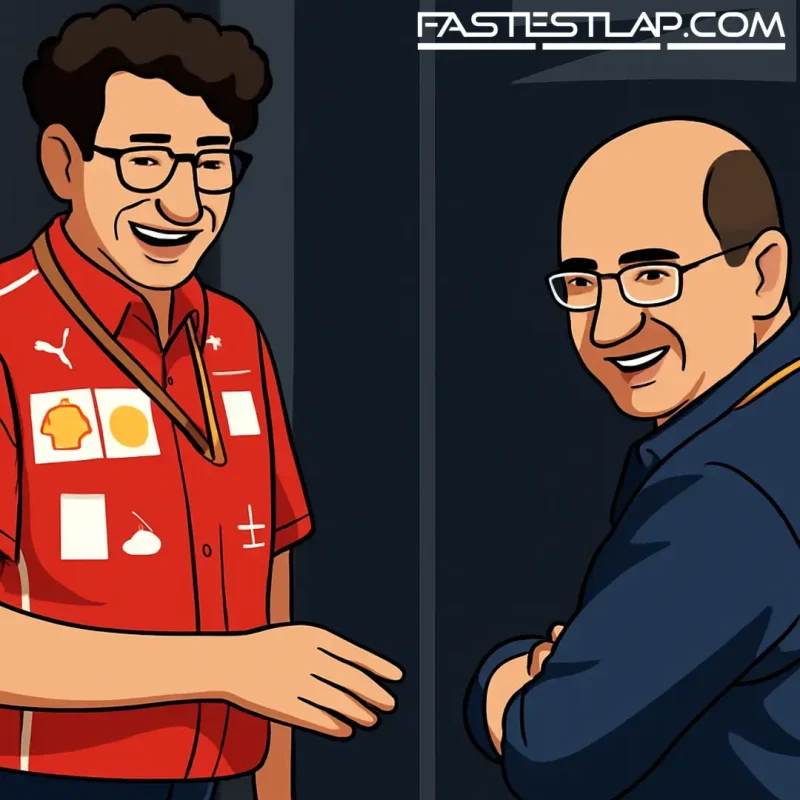McLaren has turned to one of Maranello’s old hands to steady the mic. Luca Colajanni, the long-time Ferrari communications chief who’s since done tours with the FIA, Formula 1 and most recently Pirelli, will take over as McLaren’s F1 communications director, replacing Sophie Ogg.
Ogg departs after almost four years in charge, with Baku marked as her final race weekend. The move is understood to be driven by personal circumstances and the grind of a long commute to Woking. Colajanni steps in from October 8 and will be on point from the United States Grand Prix as McLaren finalizes a season that’s been relentless both on track and in the inbox.
If the name rings a bell, that’s because Colajanni spent a generation at Ferrari. From 1992 to 2014 he worked through roles as press officer and head of communications at the Scuderia during some of F1’s most intense eras. A brief stint at Marussia followed, then Formula E, the FIA and F1’s own organization. He returned to Ferrari in 2020 before crossing to Pirelli in 2023 after a short detour via Italian tennis. It’s a CV built for the storm: a calm operator who knows exactly how a top team lives and breathes under glare.
McLaren’s comms department has been undergoing a quiet reshape. Steve Atkins, the long-serving chief communications officer who became part of the team’s fabric, resigned at the end of February for personal reasons. With Ogg now moving on, Colajanni’s arrival gives McLaren a heavyweight voice just as the calendar heads into its deciding stretch.
He’s not the only new face moving boardroom chairs around the paddock. It’s been a revolving-door year across F1’s comms suites. Audi’s effective head of communications, Guido Stalmann, exited at the end of September after guiding the manufacturer through its start-up phase and integration into Sauber. Stalmann previously steered BMW’s messaging as engine supplier to Williams and during the marque’s 2006 entry with Sauber, so his departure is significant as Audi edges closer to the sharp end of F1.
Red Bull’s communications upheaval has been even noisier. Paul Smith was dismissed from his role in July, a decision that arrived alongside the team removing Christian Horner from his operational duties as CEO and team principal. Smith hasn’t been formally replaced; instead, former comms chief Eric Silbermann has been drafted back to advise and corral senior managers Alice Hedworth and Anna Webster while the team recalibrates. Elsewhere on the grid, former Red Bull communications manager Julianna Jackson has switched to Williams, with the move effective from the Azerbaijan Grand Prix weekend.
On the American front, Cadillac has brought in a familiar specialist. Lucy Genon, who previously headed comms at Renault and Alpine, has returned to the F1 fold as head of media and PR for the Cadillac program. And Adrian Atkinson—Aston Martin’s ex-chief communications officer who left at the end of 2024—has reemerged at the center of General Motors’ wider racing effort. Now Executive Director, Global Motorsports Communications, Atkinson will oversee messaging across GM’s portfolio: F1, IMSA, WEC, INDYCAR and NASCAR. His appointment underscores the scale of GM’s ambitions as the Cadillac project beds in.
For all the churn, a few stalwarts remain anchored. Fabiana Valenti is the longest-serving comms chief in the paddock, having joined the Faenza outfit back in its Minardi days in 2000 and now leaning into a more factory-based role at Racing Bulls. Mercedes’ Bradley Lord isn’t far behind; he’s been with the team since early 2011 and now serves as chief communications officer and a team representative under Toto Wolff. Over at Aston Martin, Will Hings—head of media and communications—dates back to the Force India era in April 2011 and now works alongside chief communications officer Luke Skipper, who stepped in after Atkinson’s exit.
What does Colajanni’s arrival mean for McLaren? In short, stability and a deft touch in the tightest corners. He’s seen nearly every shape of political crosswind F1 can throw up, from title run-ins to internal resets, supplier rows and governing body tussles. McLaren’s modern resurgence on track has inevitably raised the scrutiny dial off it; translating performance into narrative while keeping the noise down is precisely the craft he’s known for.
There’s also the basic, underrated bit: relationships. Colajanni’s address book stretches across teams, stakeholders and the media—exactly what you want when the sport’s tempo is at full gallop. With the U.S. round looming and the season’s endgame forming, McLaren’s chosen a seasoned hand to keep the messages sharp, the story straight, and the temperature under control.
In a year where comms has been as eventful as the racing, this might be the most McLaren move of all—quietly decisive, strategically tidy, and timed to matter.




